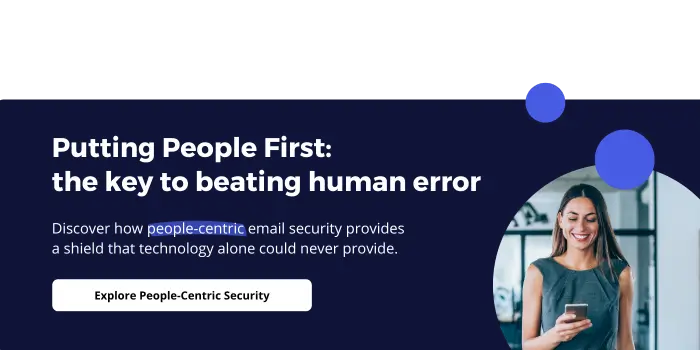In today's digital age, the number of cyberattacks is increasing, leading to a greater need for investment in cybersecurity. However, it is important to note that many of these investments tend to focus solely on technical solutions, often overlooking the critical human and process aspects of cybersecurity.
While the digital era has brought about remarkable opportunities for businesses, it has also exposed them to a growing wave of cyber threats. These threats range from high-profile data breaches to sophisticated phishing attacks, posing significant risks to sensitive information and business operations. As a result, organizations are realizing the importance of investing heavily in cybersecurity as a critical strategic priority. However, it is crucial to strike a balance between implementing robust technical solutions and addressing the equally vital human and procedural elements of cybersecurity to achieve a strong cybersecurity posture.
1. Investing in people
Investing in people is crucial because, as the saying goes, "A chain is only as strong as its weakest link." This holds true for cybersecurity as well. Human vulnerabilities, regardless of technological advancements, often create security vulnerabilities. In fact, according to Verizon’s latest report, 74% of data breaches are due to human error. Whether it's falling for phishing emails or accidentally sending data to the wrong person, people unknowingly introduce vulnerabilities to an organization's security.
By investing in people, you are equipping them with the knowledge and skills required to make informed and secure decisions. Your employees are the initial line of defense against cyber threats. They play a vital role in detecting and reporting suspicious activities, thwarting social engineering attempts, and preventing security breaches.

This investment in people can take several forms:
- Cybersecurity training and education: When your team is well-informed about the latest threats, they can spot suspicious activities, reducing the risk of falling victim to cyberattacks.
- Hiring cybersecurity experts: In the face of complex cyber threats, having skilled professionals is vital. They proactively identify vulnerabilities, enforce security measures, and respond to breaches effectively.
- Creating a security-conscious culture: Cultivating cybersecurity awareness within your organization encourages adherence to security protocols and prompt reporting of suspicious activities, minimizing the risk of internal threats and data breaches.
2. Investing in processes
Effective cybersecurity processes are the foundation of a secure business environment, allowing organizations to proactively identify and address vulnerabilities, thus reducing the risk of data breaches and other incidents. Here are a few essential processes to consider:
- Access control policies like multi-factor authentication (MFA): Ensure that only authorized personnel can access specific resources. MFA requires users to provide multiple forms of verification (e.g., password + SMS code or fingerprint) before gaining access.
- Incident Response Plans: Having a well-defined incident response plan is essential for minimizing damage in the event of a breach. Investing in processes that outline clear steps to follow during a cyber incident can significantly reduce downtime and financial losses. According to IBM’s Cost of a Data breach 2023, organizations with high levels of IR planning and testing saved USD 1.49 million compared to those with low levels and identified breaches 54 days faster.
- Password management and routine password changes: Did you know that even in 2023, the most common password is still "123456"? Weak or compromised passwords are a common entry point for cybercriminals. Implementing a strong password management process ensures that employees create and maintain secure passwords.
- Regularly reviewing account settings: Regular updates limit the attack surface, enhancing security. Remove unnecessary permissions, deactivate inactive accounts, and ensure that each account only has access to what is required for its role. This helps prevent insider threats and limits the attack surface.
Research by the Harvard Business Review shows that employee stress often leads to non-malicious policy violations, which are far more common than malicious breaches. Every company, regardless of its size, should prioritize the development and implementation of robust cybersecurity processes that work with the users instead of overwhelming them.
3. Investing in software
Think of your organization's cybersecurity as a strong fortress. Your processes and people act as dedicated guards, patrolling the perimeter and ensuring only authorized personnel can enter. But just like a fortress needs sturdy walls, your cybersecurity also requires robust software technology. This software acts as an impenetrable barrier against cyber threats, working in tandem with your guards. Investing in software is a crucial step in strengthening your cybersecurity defenses. By harnessing the power of technology, businesses can effectively protect their assets from cyber threats and human error. This involves utilizing advanced tools like firewalls, Intrusion Detection Systems (IDS), antivirus software, and email encryption technologies to secure networks and data.
Moreover, investing in cybersecurity software, particularly solutions driven by Artificial Intelligence (AI) and Machine Learning (ML), is crucial for staying ahead of threats, adapting to new attack methods, and reducing false alarms. These state-of-the-art technologies enhance your organization's ability to combat the ever-evolving landscape of cyber threats.
To ensure that your software remains up-to-date and secure, it is important for businesses to take a proactive approach by regularly updating and patching systems. Just like a diligent maintenance routine strengthens the walls of a fortress, consistent software maintenance reinforces your company's digital defenses, allowing your organization to confidently withstand the constantly changing cyber threat landscape.

BONUS - People-centric cybersecurity:
While we've discussed the importance of investing in people and technology separately, the convergence of these two aspects holds enormous potential for enhancing cybersecurity.
By prioritizing people-centric solutions, businesses empower their workforce to make informed, secure decisions and actively participate in safeguarding the organization's digital assets. People-centric cybersecurity acknowledges that human error and behavior often underlie security challenges. Therefore, it prioritizes involving, educating, and raising awareness among users to enable them to take appropriate safety measures.
A pivotal element of this approach is providing straightforward and user-friendly security solutions, simplifying the process of safeguarding digital interactions. For example, an easy-to-use email encryption solution that doesn’t require technical knowledge, integrates into users existing workflows, doesn’t disrupt, etc.
It also involves continuous awareness campaigns and user training initiatives. Through educational programs, regular updates, and reminders, users gain valuable insights into risks and best practices regarding cybersecurity. This holistic approach equips individuals to recognize suspicious emails, handle attachments securely, and prevent inadvertent sharing of sensitive information.
This strategy reduces the likelihood of security incidents and shields sensitive information from unauthorized access, whether from internal or external sources. According to Gartner, by 2027, 50% of large enterprise chief information security officers (CISOs) will have embraced human-centric security design practices to minimize cybersecurity-induced friction and maximize control adoption, underscoring the growing importance of this approach.

